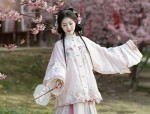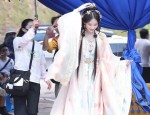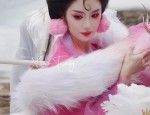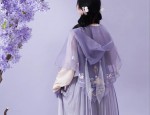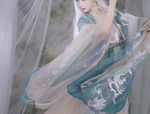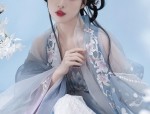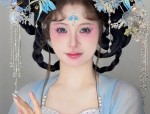The Art of Qipaos Edge Trimming and Border Embroidery
In the realm of traditional Chinese clothing, the qipao holds a special place. This graceful garment, a symbol of elegance and cultural richness, is not only known for its unique design but also for the intricate details in its craftsmanship. Among these details, the edge trimming and border embroidery, often known as the '包边条' and '镶边', are paramount in enhancing the beauty and durability of the qipao.

The art of edge trimming in qipao dates back to the early 20th century, when the garment first gained popularity among Chinese women. The 包边条, usually made of silk or synthetic material, is used to outline the edges of the qipao, giving it a refined and elegant look. The process involves stitching these strips onto the edges of the garment, ensuring that they are tightly and evenly attached. This not only enhances the overall appearance of the qipao but also prevents the fabric from fraying or wearing out easily.
The border embroidery, or '镶边', is another essential aspect of qipao craftsmanship. This technique involves stitching intricate patterns and designs onto the borders of the garment using various threads and techniques. The patterns often reflect traditional Chinese motifs such as flowers, birds, or geometric shapes, adding a touch of cultural richness to the qipao. The use of different colors and threads creates a vibrant and lively look, making each qipao unique and distinctive.
The process of border embroidery is quite complex and requires skilled craftsmanship. The embroiderer needs to have a good understanding of different stitching techniques, such as running stitch, cross stitch, and chain stitch. They also need to have a good eye for detail and patience to ensure that each stitch is perfect. The use of suitable threads and fabrics is also crucial to achieve the desired look and durability.
The role of 包边条 and镶边 in qipao cannot be understated. Not only do they enhance the beauty and elegance of the garment, but they also play a vital role in preserving the qipao's structural integrity. With proper care and maintenance, a qipao can last for generations, passing down through families as a symbol of cultural heritage and pride.
Today, qipaos with exquisite 包边条和镶边 are not only worn during special occasions but have also become a part of everyday fashion. They are worn by women of different ages and backgrounds, who appreciate the beauty and culture behind this traditional Chinese garment. The art of edge trimming and border embroidery continues to thrive, with skilled craftsman passing down their knowledge and techniques to future generations.
In conclusion, the 包边条 and镶边 are not just decorative elements in qipao; they are an integral part of its craftsmanship and cultural heritage. They reflect the skilled craftsmanship of generations and add a touch of elegance and beauty to this traditional Chinese garment. As qipaos continue to evolve and gain popularity, the art of edge trimming and border embroidery will continue to thrive, preserving the beauty and culture of this traditional Chinese clothing for future generations.

 Previous Post
Previous Post



